|
|
| | 1 |
| 2 | 3 | 4 | 5 | 6 | 7 | 8 |
| 9 | 10 | 11 | 12 | 13 | 14 | 15 |
| 16 | 17 | 18 | 19 | 20 | 21 | 22 |
| 23 | 24 | 25 | 26 | 27 | 28 | 29 |
| 30 | |
|
| |
|
|
|
|
|
|
|
|
|
Five Common Types of Daisies
 Five Common Types of Daisies Five Common Types of Daisies
Five Common Kinds of Daisies
There are many different types of daisies, in fact there are more than 20,000 species of plants that fall into the daisy family. Though it's not clear whether the daisy family or the orchid family have more species, both have plenty. As there are so many types of daisy flowers, I could not possibly talk about all of them, but I am going to cover some of the most popular daisy types, with pictures.
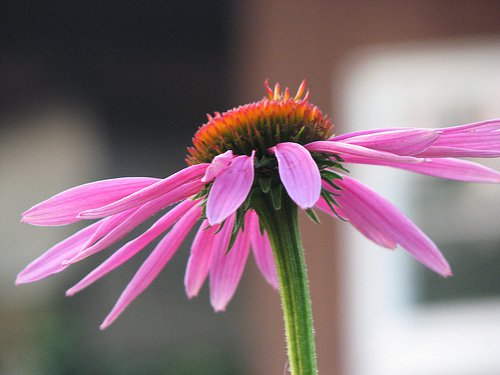
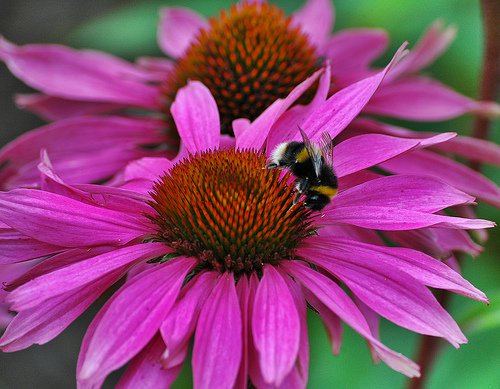
Purple Coneflower
The purple coneflower is a type of daisy that can grow nearly four feet tall. The name is given to Echinacea purpurea and other Echinacea species. Echinaceas, including the purple coneflower, are used in cold remedies to stimulate the immune system. It is a beautiful flower that features vibrant purple petals, a yellowish-brown cone-shaped center, and a stem that has white hairs along it and can have streaks of purple running through it. The leaves are deep green and generally have three to five visible veins running through them. An interesting fact about purple coneflowers is that the central disc in the middle of the flower is actually made up of tiny little flowers, as is the case with many daisy plants. So after the purple flower petals fall off, you still have a flower, or actually, a central cone with many little flowers. The petals or rays of the coneflower range from pink to purple in color, and droop downwards from the central cone. There may be as many as 20 petals around the cone; this number varies from flower to flower. The entire flower is three to four inches across. The coneflower likes to be in partial sun. When the weather is dry it will need to have extra water, or the flower will wilt and possibly die. If the soil is moist and fertilized it will be ideal for this type of daisy flower. You will often see the purple coneflower on roadsides, in dry clearings, or in prairie areas. The flower is commonly found in the eastern part of North America including much of new England. It extends as far southwest as Texas, but is also found in Iowa, Oklahoma, and Kentucky.
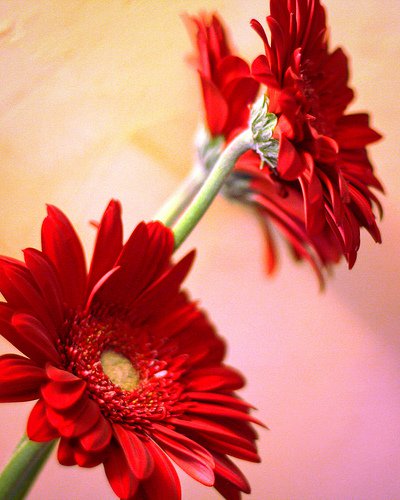
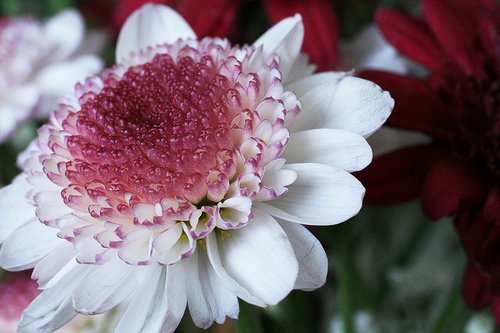
Gerber Daisies
The Gerber daisy (Gerber jamesonii and hybrids of it) has the typical daisy shape, with a dark center and several long brightly colored petals fanning out from it. Unlike a lot of other daisies, the Gerber daisy is a very fragile plant. This kind of daisy is often used in bouquets and other floral arrangements and is often found at special events like weddings. These daisies are native to South Africa, Madagascar, and Asia, and now you can find them in many places everywhere. The Gerber daisy was originally a tropical plant, but now there are many hybrid versions of the Gerber that can survive in many additional kinds of environments. These daisies, though on the tender side, are fairly hardy. They need full sunlight, and will only need watering if there is not a lot of rain. They can be grown inside or outside; humidity doesn't have a huge effect on the Gerber daisy. Gerber daisies come in different colors ranging from pink to orange, yellow, white, and red. If you want to attract birds and butterflies into your garden try planting these flowers! Butterflies and birds love the Gerber daisy. The flower is two to five inches across, with stems 12-18 inches long, and leaves 8-10 inches long. Gerber daisies are different from "typical" daisies like Shasta daisies, because Gerbers have more petals and the petals come to a pointier end.
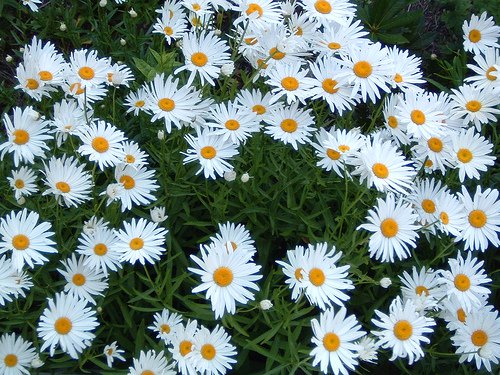
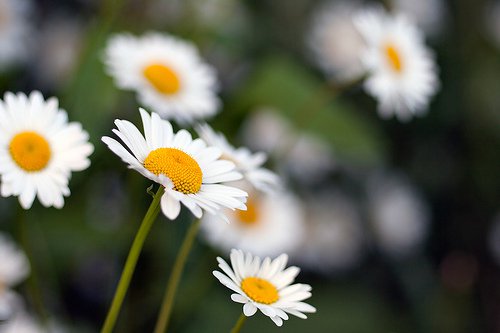
Shasta Daisies
Shasta daisies are a cultivated hybrid member of a large family of European wildflowers (Leucanthemum) with yellow centers and white petals, that tend to look like the typical coloring-book daisy. Many Leucanthemum-type daisies are invasive when planted in the US and will take over an area if allowed to. Shasta daisies are one the few daisies grown on purpose. The Shasta daisy, which some call Chrysanthemum x superbum and some call Leucanthemum x superbum, is a hybrid daisy that was created by Luther Burbank near Mount Shasta, California. It got its name from its snow-white petals. The Shasta daisy is not only one of the largest daisies, but it comes in dozens of types and sizes. Many gardeners consider it to be the best kind of daisy, since there are many varieties, they are lovely flowers, the plants can supply plenty of cut flowers, and as already stated they are one of the few daisies that will not take over the area they are planted in. Shasta daisies grow on tall, leafless stems ranging from 12-36 inches. The flower has a bright yellow center and many white petals. Shasta daisies like full sun, though they can be planted in partial shade if they get full sun for a good part of the day. They need to be planted in well-drained soil, though it needs to be kept moist most of the time. These daisies are often used in gardens and flower arrangements.
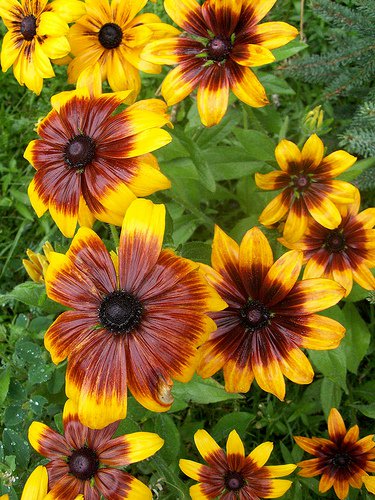
Gloriosa Daisies
The Gloriosa daisy is a domesticated form of Rudbeckia hirta, also called Black-Eyed Susan, another hardy American wildflower. Rudbeckias are yellow or gold, and since their petals droop away from the dark cone-shaped center, they are also sometimes called "coneflowers" like the Echinaceas. The Gloriosa daisy has petals that shade from deep burgundy red at the center, to a lovely orange, to a stunning yellow at the edges. The flower blossoms are 5-9 inches across, on top of a long stem with elongated leaves up and down the entire stem. The entire plant grows to be between 2-3 feet tall. Gloriosa daisies like sunny areas, and they will flourish in many types of well-drained soils. This flower can stand being neglected for a while, since it is used to drought and is very hardy. You will often find them growing alongside the road, in flower banks, and in open areas such as fields and prairies.
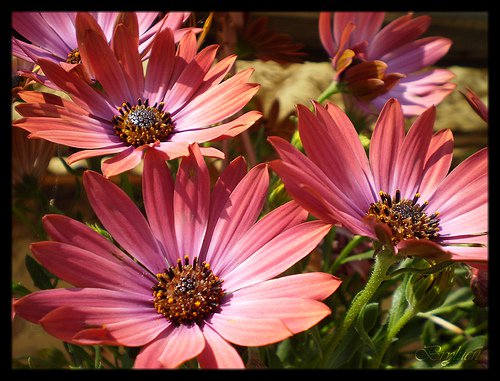
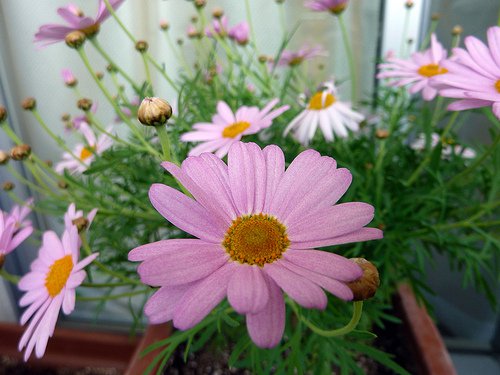
Marguerite Daisies
The Marguerite daisy (Argyranthemum frutescens), from the Canary Islands, is a lovely daisy. The large center is generally yellow but depending on the variety can also be pinkish in color. The petals of the Marguerite are generally white, pink, or yellow. They can have single or double blooms and they are usually 1-2 inches in size. The leaves of Marguerite daisies are a blue-green color, thin and almost fern-like. The Marguerite daisy does best in richly fertilized, well-drained soil. They also like to be planted in fully sunny areas. They work really well as a border or on the outside edge of your yard or garden, adding the perfect splash of color to the area. This type of daisy is a pretty hardy plant. If you have them planted outside make sure to water them about twice a week. If the plant starts to wilt it is a sign that they need a bit more water. Moisten the soil pretty often, but not all the time, because as with most plants their roots will rot if left in constant water.
Plants in the Asteraceae Family Vary There are many different types of daisies. They are beautiful, brightly colored flowers that will be a great addition to any garden or home. They also work well in bouquets, flower pressing, designs, and other special events and projects. There are so many daisy species and varieties that I couldn't possibly mention them all. However, I will quickly mention some lesser-known plants that are part of the daisy family as well. Daisies are part of the Asteraceae family, as are other ornamental plants like marigolds and chrysanthemums, and edible plants like lettuces, sunflowers, chicory, safflower, and artichokes. Also belonging to the daisy family are herbs like arnica, wormwood, tarragon, and camomile. Though not usually thought of as daisies, they do have similar characteristics.
   
| Create Date : 20 กันยายน 2561 |
|
0 comments |
| Last Update : 20 กันยายน 2561 21:00:08 น. |
| Counter : 760 Pageviews. |
|
 |
|
|
|
|
|
|